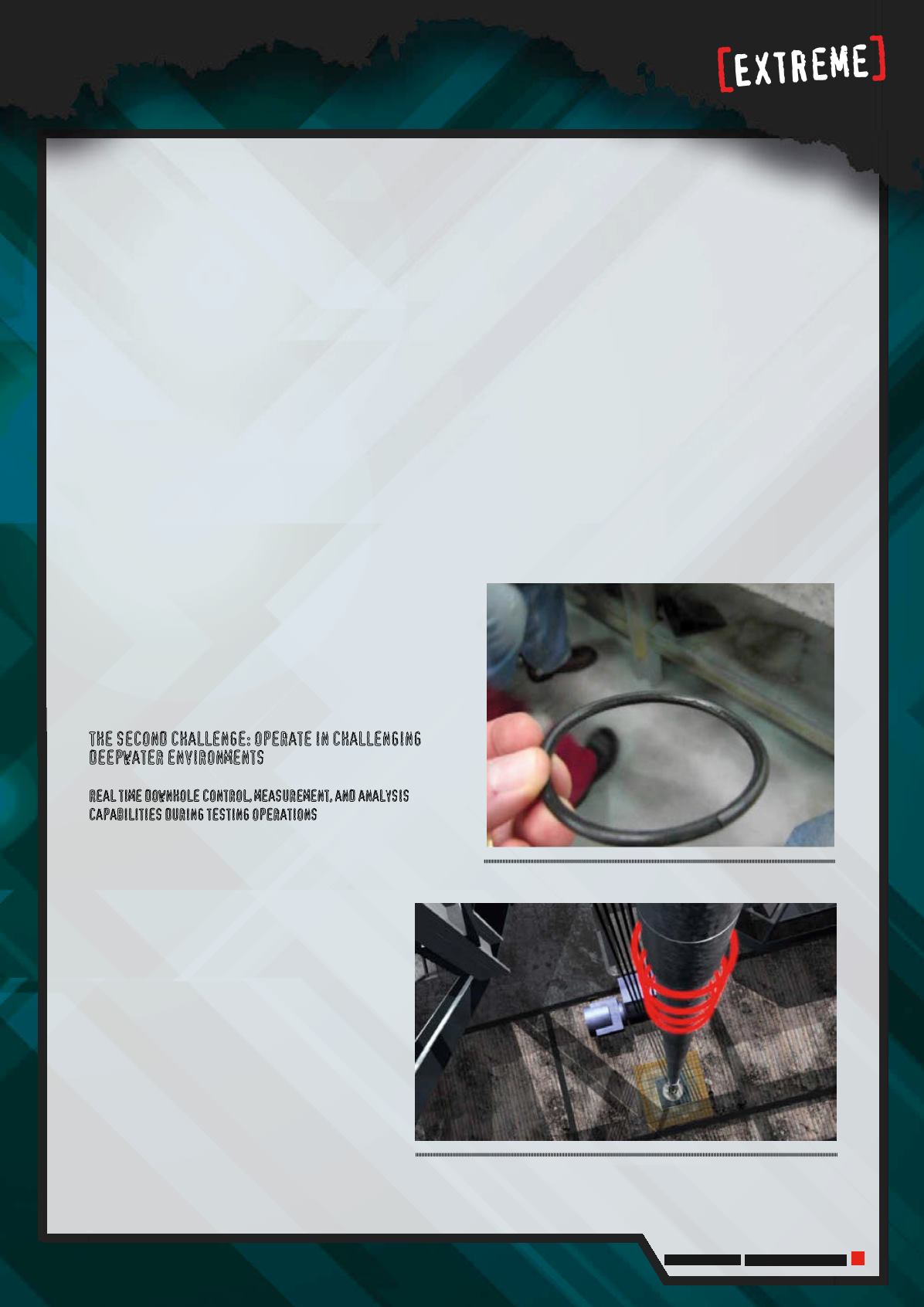
January 2016
Oilfield Technology |
63
conditions and specifications (Figure 2). In addition, a
buckling test was performed at 100 000 lb of compressive
load to help guarantee tool operation under extreme well
test conditions.
Additional tests included high-pressure rupture disc
qualification up to 31 000 psi bursting pressure to help
guarantee minimum pressure deviation of the rupture discs
at the time of tool activation.
Finally, a test on the elastomers (Figure 3) and metallurgy
was executed to help guarantee tool integrity in a challenging
fluid environment.
In summary, tools were qualified to operate under the
following extreme conditions:
Qualified in Ca-Zn Bromide.
Qualified to 25 000+ psi.
Qualified to 250˚F and 400˚F.
Qualified for 30+ days.
Qualified extreme rupture discs.
Qualified to 100 000 lb compression.
Several global operations using these tools have
been executed between 2012 and 2014. These operations
include more than ten successful jobs in the Gulf of Mexico
providing an excellent certified solution to operations
on very extreme and challenging extra high-pressure
environments. Sampling and data acquisition systems
have hundreds of runs worldwide.
Thesecondchallenge: operate inchallenging
deepwaterenvironments
Realtimedownholecontrol, measurement, andanalysis
capabilitiesduringtestingoperations
As observed previously, the current testing market has an
impressive new generation of annulus pressure-operated
downhole test tools available to operate under
challenging and extreme conditions. This tool
generation provides the required versatility and
flexibility during the execution of drillstem tests
to address the new and growing challenges of
reservoir evaluation in deep and ultra-deepwater.
These new generations of tools have been
designed and built to help ensure the highest
safety standards and with the capability to deliver
greater efficiency in the acquisition of reservoir
information in exploration, appraisal, and
evaluation wells.
In addition, new working environments
require operators to function under more
stringent operating conditions where operational
efficiencies directly impact costs. Reduction of
annulus pressure requirements have become even
more important due to limitations related to complex
casing programmes.
In today’s market, especially when operations are
performed in deep and ultra-deepwater, the availability of
real time data collected during testing operations is vital.
It is linked not only with the data collection, reservoir
analysis, and characterisation, it is paramount to allow
operators to monitor and confirm operational status of
their downhole tools. Access and knowledge of these data
provide the insight required to reduce uncertainties of
downhole conditions, help ensure operations are being
carried out in a safe manner and as planned, and allow
for the possibility and flexibility to introduce the required
modifications to achieve the outlined and desired testing
objectives. In addition, the improvements achieved with
these new tools allow operators and service companies to
improve operational efficiency and save rig time.
Accessing downhole information in real time to
communicate with and control tools and allow analysis of
Figure 3.
Tested elastomer.
Figure 4.
Acoustic signal travelling through tubingwalls.


